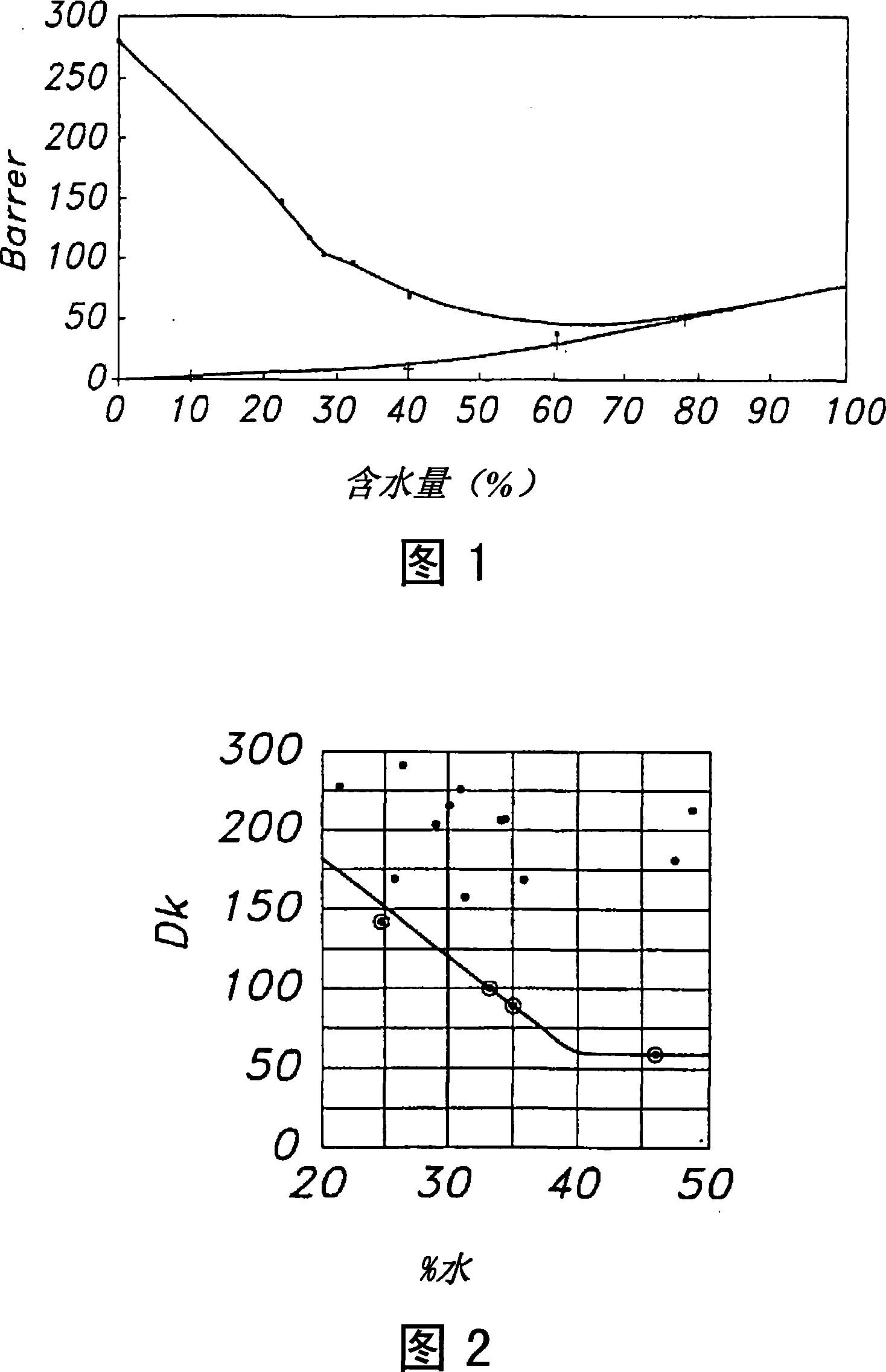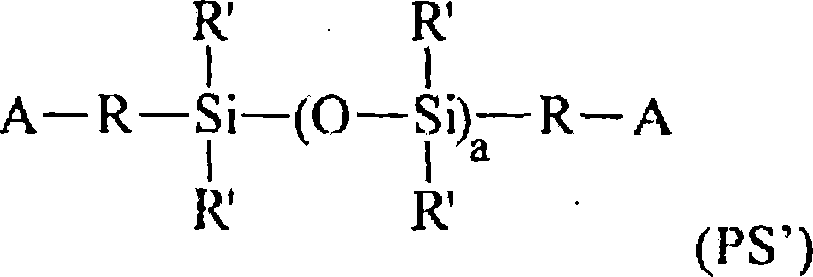Hydrogel copolymers for biomedical devices
A copolymer and hydrogel technology, applied in the field of biomedical device formation, can solve problems such as damage to oxygen permeability, damage to the cornea, and uncomfortable contact lenses
- Summary
- Abstract
- Description
- Claims
- Application Information
AI Technical Summary
Problems solved by technology
Method used
Image
Examples
Embodiment 1
[0117] Preparation of α, ω-bis(4-hydroxybutyl)polydimethylsiloxane (Mn about 5000)
[0118] The following components were added to a 2-L three-necked round bottom flask equipped with a reflux condenser: 51.26 grams of 1,3-bishydroxybutyltetramethyldisiloxane; 1085 grams of dimethoxydimethylsilane; 157.8 grams of distilled water; and 18.4 mL of concentrated hydrochloric acid. The mixture was heated at 60 °C for 1 hour. Then, methanol was distilled off over 5 hours, and 552 mL was collected. Then, 349 mL of distilled water and 349 mL of concentrated HCl were added, and the contents were refluxed at 100° C. for 3 hours. Then, the crude product was separated from the aqueous layer. Add 600 mL of diethyl ether (ether) and 400 mL of deionized water, and extract twice with 400 mL of sodium bicarbonate (0.5%), and wash twice with distilled water until the washing liquid has a neutral pH. The product (655.8 g) was then added slowly to a methanol / water mixture (508.2 g / 147.97 g). T...
Embodiment 2
[0120] Preparation of α, ω-bis(4-hydroxybutyl)polydimethylsiloxane (Mn about 2700)
[0121] This polysiloxane was prepared according to the general procedure of Example 1, except that the molar ratio of 1,3-bishydroxybutyltetramethyldisiloxane and dimethoxydimethylsilane was changed to about 1:28. alkyl. The molecular weight (Mn) determined by titration was 2730.
Embodiment 3
[0123] Preparation of polydimethylsiloxane-based prepolymers using the PDMS of Example 1 and comprising units of formula (I) and (II)
[0124] A 500 mL dry 3-neck round bottom flask was connected with a nitrogen inlet tube and a reflux condenser. The following components were added in one portion to the flask: isophorone diisocyanate (2.111 g, 9.497 mmol) (IPDI), diethylene glycol (0.498 g, 4.696 mmol) (DEG), dibutyltin dilaurate (0.161 g) and 150 mL of dichloromethane. Reflux the contents. After overnight, the amount of isocyanate was reduced to 43.3% by titration. Then, α,ω-bis(4-hydroxybutyl)polydimethylsiloxane from Example 1 (45.873 g, 9.557 mmol) was added to the flask. Reflux was continued overnight and residual unreacted isocyanate was determined by titration. Then, IPDI (1.261 g, 5.673 mmol) was added and reflux was continued overnight. The amount of isocyanate was reduced to 22.9% as determined by titration. Cool the contents to ambient temperature. 1,1'-bis-2...
PUM
| Property | Measurement | Unit |
|---|---|---|
| modulus | aaaaa | aaaaa |
| modulus | aaaaa | aaaaa |
| water content | aaaaa | aaaaa |
Abstract
Description
Claims
Application Information
 Login to View More
Login to View More - R&D
- Intellectual Property
- Life Sciences
- Materials
- Tech Scout
- Unparalleled Data Quality
- Higher Quality Content
- 60% Fewer Hallucinations
Browse by: Latest US Patents, China's latest patents, Technical Efficacy Thesaurus, Application Domain, Technology Topic, Popular Technical Reports.
© 2025 PatSnap. All rights reserved.Legal|Privacy policy|Modern Slavery Act Transparency Statement|Sitemap|About US| Contact US: help@patsnap.com



